|
| *****SWAAG_ID***** | 846 |
| Date Entered | 10/01/2015 |
| Updated on | 11/01/2015 |
| Recorded by | Tim Laurie |
| Category | Rock Art |
| Record Type | Archaeology |
| Site Access | Public |
| Record Date | 20/02/2014 |
| Location | The Bowes Museum. |
| Civil Parish | Barnard Castle |
| Brit. National Grid | |
| Geology | Slabs of Fell Sandstone. |
| Record Name | The Greta Bridge probable cist cover decorated in the cup and ring tradition, subsequently reused as a cover to a Roman Grave. |
| Record Description | The Greta Bridge cist cover is now relocated to the grounds of the Bowes Museum where it can be seen to lie beneath trees close to the wall to the east of the Main Road Entrance Gates. This slab is decorated with simple cups and grooves in the cup and ring tradition and was discovered some 40 years ago during improvement works to the A66 (The Greta Bridge By-Pass) some 400m east of the new road bridge over the River Greta. This slab was stated to have been reused as the cover to a roman grave, although I have not seen the records or evidence for this and it may well have been the cover to a Neolithic Cist originally. This slab has been trimmed as a grave cover and the small chevron like figure which consists of slight pecked chevron or V shaped on plan grooves are difficult to see. Each arm of the V shaped grooves leads from a small terminal cup mark. The chevron figure is extended by a single groove which terminates in a larger cup. This figure is probably unique in Neolithic/Early Bronze Age Cup and Ring Motifs. |
| Dimensions | See photo. |
| Additional Notes | This slab has been recorded previously on this database, however the opportunity was taken to photograph this rock again, under ideal sunlight conditions. Cup and ring marked slabs similar to this example are usually Cist Grave covers and are often decorated on both faces, as for example the Gainford Stone. The Gainford Stone, which is one of the finest examples of British Prehistoric Rock Art, can be seen inside the Museum on display within the Archaeological Collections on the First Floor.
It is possible that this slab from Greta Bridge is also decorated on both faces, but unless the slab is lifted, we shall never know! |
| Image 1 ID | 6027 Click image to enlarge |
| Image 1 Description | The Greta Bridge Stone. Originally decorated with cups and grooves as the cover slab to a Neolithic Cist Burial, subsequently reused as the cover to a Roman Age Grave in a cemetery by the road leading eastward from the Greta Bridge Fort | 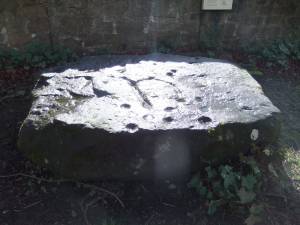 |
| Image 2 ID | 6028 Click image to enlarge |
| Image 2 Description | | 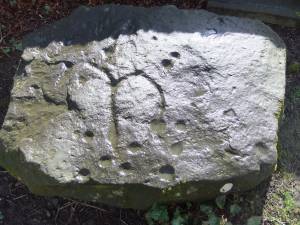 |
| Image 3 ID | 6030 Click image to enlarge |
| Image 3 Description | | 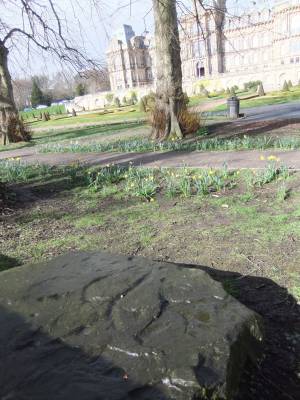 |
| Image 4 ID | 6031 Click image to enlarge |
| Image 4 Description | | 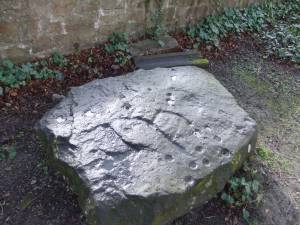 |
| Image 5 ID | 6032 Click image to enlarge |
| Image 5 Description | The chevron like figure at the edge of the slab which appears to have been truncated, possibly when the slab was trimmed as the cover to a grave. | 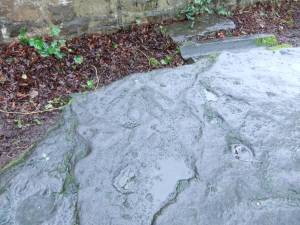 |
| Image 6 ID | 6033 Click image to enlarge |
| Image 6 Description | The chevron like figure, detail. | 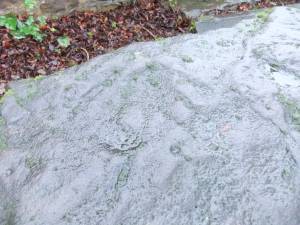 |
| Image 7 ID | 6034 Click image to enlarge |
| Image 7 Description | The Gainford Stone. Sandstone slab decorated on both faces. Probable Neolithic Cist Cover Slab. One face (the face shown)decorated with complex multiple concentric ring figures, the other face decorated with simple cups and connecting grooves. Found during 1932 at Gainford during drainage excavations. For comparison with the Greta Bridge Stone. Photo: The Bowes Museum. | 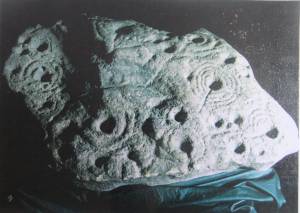 |






